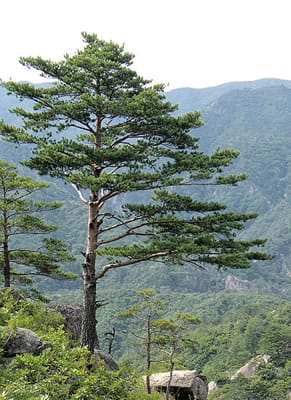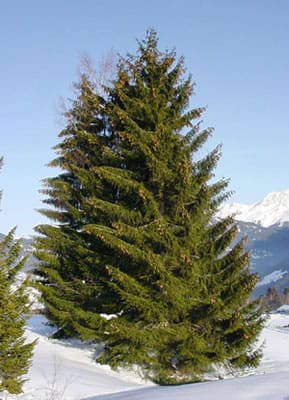I have been emailing with a potential customer today and he asked me this:
“I am still therefore split in my decision between your cabin and one other competitor. (An improvement on the eight I started with!). To this end, can you tell me the real issue over the timber quality with Companies that are using mixed pine/spruce as opposed to your materials? The other Company do this which seems to be the main difference as neither of you do finger jointing. Hopefully then I can make a better informed decision.”
I explained in a very condensed version what the differences of timber are that are currently being used in log cabins across the industry but mainly in the UK. I think it was actually a bit of a ramble. However with a glass of wine in my hand I can write it a little better and more concisely here.
If you are researching a log cabin it helps to know what you are getting. Like my customer asked, you can then make a fully informed decision:
Two Types of Timber we can use in a log cabin.
In a log cabin we can either use Pine or Spruce.
1. Pine – Wikipedia Pine Entry
Pine is known as a redwood, it’s widely used for a lot of things we use daily. No doubt you will have some pine furniture at home.
Pine isn’t as dense as Spruce and therefore it does absorb water quicker. It’s the cheaper of the two types we can use in a log cabin. We use it very widely in the garden for fencing panels, posts, home and garden furniture, play equipment etc.
Because it is less dense, we will pressure treat it to guard against rotting in the long term. It also tends to have looser knots and more of them. It changes colour with sun light to a darker colour. It’s also not as structurally strong as spruce and has wider ring growth.

Pine tree
2. Spruce – Wikipedia Spruce Entry
Spruce is a white-wood, it doesn’t discolour any where near as much as pine so it is more aesthetically pleasing inside a log cabin. It is more dense than pine as well, the knots are tighter and usually there are less of them than in pine. It is structurally stronger but is more expensive than pine. Tuindeco log cabins are entirely spruce including the roofs and floors.

Spruce tree.
Difference
The main difference between the two is the denseness of the timber and this makes a lot of difference in a log cabin. Because of this it stands to reason that they both behave differently and this is where the problem starts when we mix timbers.
I’m sure you’re aware of a Bi-metal strip that’s used in thermostats? With this we take advantage of the different expansion and contraction properties of brass and copper, both of which are similar metals like spruce and pine are similar. But, there is of course a difference between them.
With a log cabin do we really want to have different rates of expansion?
If we do have a mix It will mean that logs expand and contract at different rates, gaps can appear, splits and all sorts of horrible things could possibly happen over its life if we are not fully aware of it.
We also have the aesthetics of it, lovely white spruce contrasted with the red of the pine really doesn’t look very nice. We then also have to contend with pine’s tendency to rot quicker unless it has been pressure treated.
Some suppliers will also specify finger joints using a spruce / pine mix and then we have even more issues with different rates of expansion. It does make for a far cheaper log cabin though and we can still overcome it by remembering it and when we are building it.
Varying expansion rates is great for a Bi-metal strip, not so good in a log cabin unless you are aware!
Spruce / Pine Mix
So, it’s really not a good idea to make a log cabin from pine in my opinion and certainly that of Tuindeo if you find a cabin made of pine it’s not a good thing, but, if you do take it, it should be VERY cheap.
Of course some companies will do it as it saves a lot of money but please check what is being used and that the cost savings they have are properly passed on to you.
Far more popular though in the UK, thankfully, is adding a cheeky spruce / pine mix into a log cabin, it saves the supplier a LOT of money and should hopefully save you as a consumer as well.
Lots of mixes are out there and only really accepted in the UK, mixes are not tolerated in Europe, I think they are better educated than here in this respect.
Long term problems with a mix
Please consider that you may have the following problems in the long term with a mix:
- Different rates of expansion may cause splits, warps, gaps and long term problems.
- Pine is less dense and absorbs more water than Spruce so make sure you treat it very well.
- Pine is redder than Spruce and not as attractive inside your log cabin.
- Knots are looser in pine, there are generally more of them and they are more likely to fall out so before you apply your treatment I would recommend ‘knotting’ the logs first before you treat them.
If you do have a log cabin that has a mix, when you install it try to keep the above in mind and grade your timbers remembering the expansion rates, try to keep it even. Also if you have mixed timber and finger joints try to stagger your logs and remember the expansion will make a difference to longevity and this needs to be thought about as you build and treat it to make it last as long as one would expect.
Timber Series
Following on from this I intend to write a short series on timber in log cabins, you really wouldn’t believe the differences and the ways we can play with wood to get to the prices you the consumer wants but, do you really want it in the long term?
The following will be added to this blog over time:
- How we can cut a timber log to make a cheap log cabin.
- Moisture content in timber, machining and the impact of the content.
- Timber calculation to cut costs you can work out yourself and see where you maybe opting for a bargain while adding to a companies profits.
- More expansion information for log cabins.
- The pitfalls of thinner logs, barge-boards, windows and doors.
- Drying processes – kiln dried versus natural drying.
A timber log in a log cabin is not always just a timber log, there can be HUGE differences and all of these comes down to prices for the consumer or of course the company profits.
Oh, also watch out for spruce in the logs and pine in the roof and floor. It doesn’t make a great deal of difference but it’s nice to know what you are getting for your money!






Hi. This article about timber is useful but you have not said whether Tuin are using the best quality of timber?!
It would be good to know
Thanks
Hi Ann
Glad the page was of some help, We as a company use 100% slow grown spruce in all of our log cabins.
Hope this helps, Ben